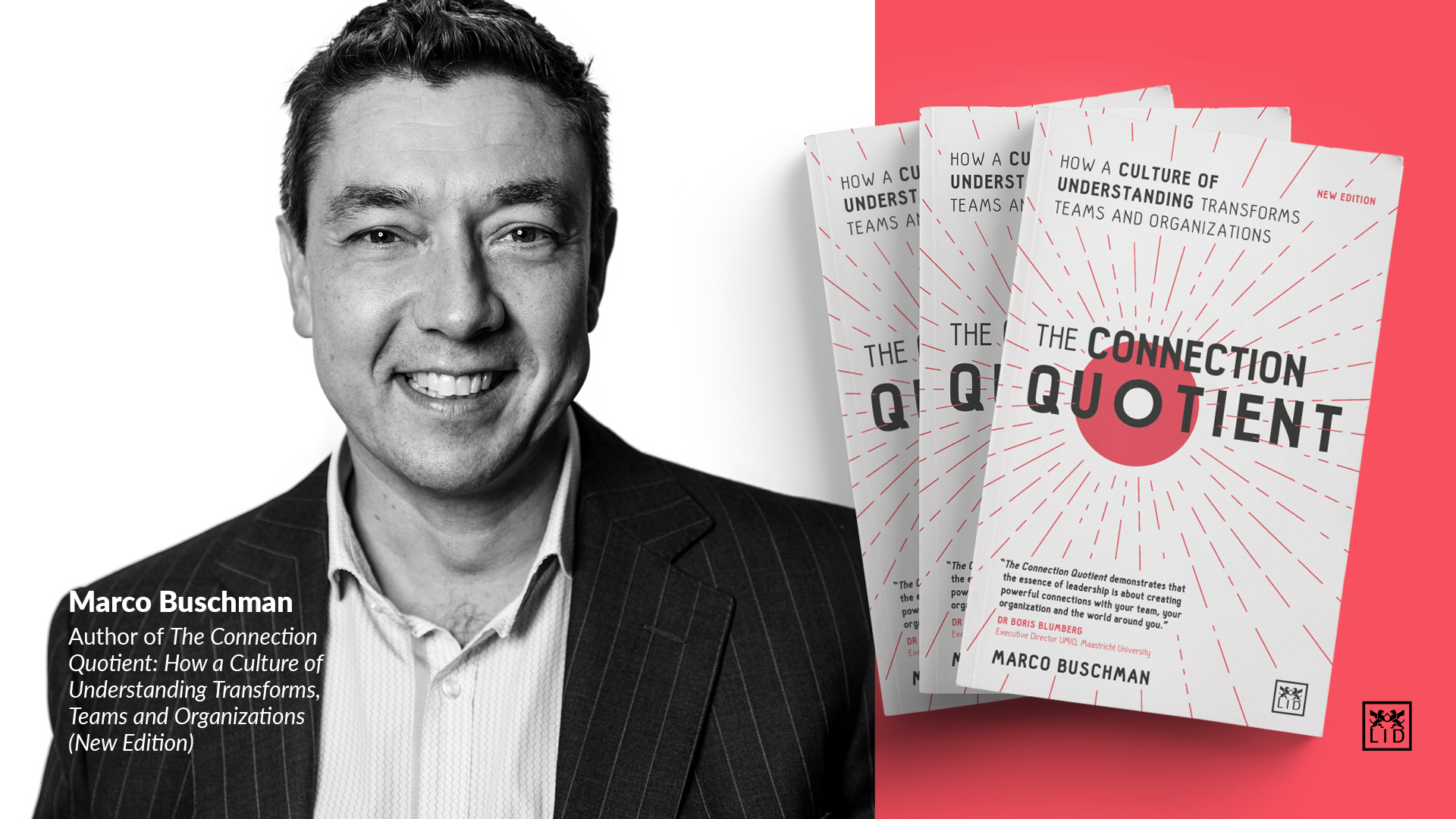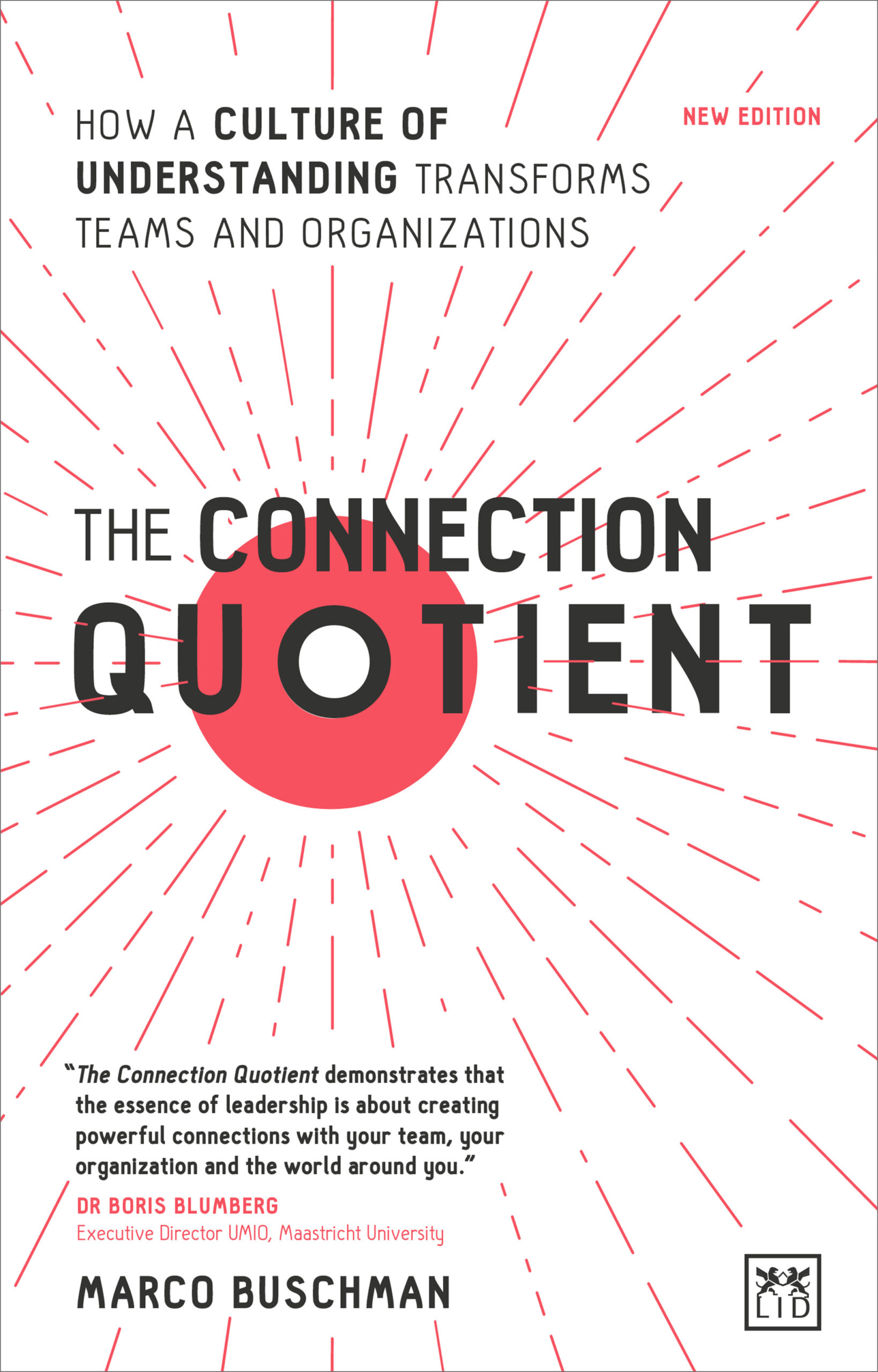|
Eight Tips to Create Powerful Interactions with Marco Buschman
Eight Tips to Create Powerful Interactions

By Guest Contributor Marco Buschman
Author of The Connection Quotient, Marco Buschman, reveals his tips on how to interact effectively with others in order to form genuine connections.
Organizations are made up of people, and people want to be seen and heard when it comes to implementing change. That means you need to get onto the work floor, make contact with them and engage in a dialogue. These conversations create the opportunity to build your message based on their answers and create a basis for change.
Interactions form the basis for creating a connection with the other, organizing work, making joint decisions, etc. Your whole day is a constant stream of interactions. And the more powerful these are, the more impact they will have on the connection and collaboration processes. To support you in creating powerful interactions, I have selected eight tips you can apply right now.
Tip 1: Getting from ‘but’ to ‘and’
Some words in our language have an enormous impact on the effectiveness of our interactions. For example: ‘You did a good job, but next time, make sure you deliver on time.’ By using the word ‘but,’ the focus switches to the second part of the sentence and this is perceived as a judgment. Or, as the old expression so beautifully puts it: ‘Everything before ‘but’ is a lie’. It’s more powerful to make use of the ‘and’ word. This has a connecting influence and lends a positive charge to the second part of the sentence. ‘You did a good job, and next time, make sure you deliver on time.’
Tip 2: Getting from ‘why’ to ‘what makes’
Another word that has a lot of impact on the effectiveness of interactions is the ‘why’ word. For example: ‘Why did you choose Laura as your replacement?’ It gives the other person the feeling that what he did wasn’t right and that he has to justify his decision. And yes, of course, it depends a lot on your tone, your intonation and your non-verbal communication whether or not the question you start with ‘why’ is received in this way. It’s more powerful to start your question with ‘what makes.’ For example: ‘What made you choose Laura as your replacement?’ ‘What makes’ usually comes across as being more positive. This construction is typical for an inquiring and researching attitude, inviting a reply and maintaining the connection.
Tip 3: Getting from ‘would not’ to ‘would’
A lot of people have trouble answering the question of what they would like to change about their work. If they have an answer, they very soon start talking in terms of what they don’t want anymore. For example: ‘I wouldn’t work overtime anymore.’ These ‘would not’ answers generally fail to produce any positive energy. Instead of specifying what you want to get away from, it’s much more powerful to indicate where you want to get to. For example: ‘I would like to work from home every Friday afternoon.’ You can almost feel the energy in that statement. If your conversation partner starts talking about the ‘would not’ side, stop them in mid-sentence and ask: ‘And what would you like to do?’
Tip 4: Getting from ‘we’ to ‘I’
When talking with team members about what works well and what could be improved – for example, in the collaboration within the team – people very soon tend to switch to talking in the ‘safe’ mode. By this, I mean that instead of saying what they really think, they make use of generalizations. Instead of ‘I don’t take people to account,’ a team member will say: ‘We don’t take each other to account.’ The general statement is of course important. But, it doesn’t alter the fact that the more someone formulates in the ‘I’ form, the more responsibility he takes for his actions and the greater the chance that he’ll actually start to make changes himself. Therefore, if people are talking in general terms, ask them to talk from their own point of view, starting with ‘I.’
Tip 5: Getting from passive to active
As soon as the subject turns to personal responsibility, a lot of people switch to talking in the passive voice. They say: ‘A lot of gossiping is happening, something should be done about it.’ This is quite a passive, not very concrete, statement. But it is based on a good observation. It becomes a little less passive if someone says: ‘I should really do something if people are gossiping.’ There is a positive intention embedded in this statement. Build on this constructively. The vagueness of the follow-up allows a person to remain passive and not take action. You can easily change this if you say: ‘From now on, I’m going to ask anyone who starts gossiping to justify their behaviour.’ This is what I call making results-based use of active language. So, next time you’re in conversation with others, ask them what they will do.
Tip 6: Getting from behaviour to intention
One reason irritations arise is that other people demonstrate behaviour that you consider unacceptable. For example, an employee might keep asking you whether the next step in a certain project is the right one. You could call that person to account by telling him that this really has to change. But it’s unlikely that he will change his behaviour. It’s more powerful to ask him what he intends by constantly raising this question: ‘What makes you always check the next step with me?’ This way, you will discover what motivates him and you can start a conversation around this. You are tackling the core problem and not just its external manifestation.
Tip 7: Getting from the general to the specific
Good feedback contributes to the growth of the other. A statement such as ‘You did well’ isn’t really helpful. It’s too general and doesn’t tell the other person what you are talking about. What is meant by ‘did’ and what does ‘well’ mean exactly? It’s more powerful to specifically indicate what you have observed, what the other person should continue doing, and what could be improved. For example: ‘Your report about yesterday’s incident is factual and clearly formulated. This gives me confidence in you. And next time, I’d like to see you also suggest a possible solution.’
Tip 8: Getting from compliment to acknowledgement
If someone hands out a compliment, it’s usually about a result that has been achieved. For example: ‘Great that you managed to supply the data today.’ These compliments are important – carry on giving them and ensure that you mean them. Yet, acknowledging someone’s qualities would be even more powerful and would really hit home. So, instead of only focusing on the functional behaviour, you need to mention explicitly the qualities you see in the other person. For example, ‘You are trustworthy’ or ‘You are genuine.’ This way, the other person is seen as a human being and not just as a production machine.
ABOUT THE AUTHOR

Suggested Reading
 The Connection Quotient enables an honest, courageous and humane interconnection to form, while still focusing on financial outcomes and results, developing these relations to improve the business networks they serve. The CQ enables us to illuminate our human qualities and use these to connect with others, discuss differences, expand insight and encourage the development of new ideas. The CQ will introduce a new workplace culture where organizations and teams can approach the personal and professional through a more transparent and inclusive style. Ultimately, the CQ makes it possible to play “hard on the ball, and soft on the individual”.
The Connection Quotient enables an honest, courageous and humane interconnection to form, while still focusing on financial outcomes and results, developing these relations to improve the business networks they serve. The CQ enables us to illuminate our human qualities and use these to connect with others, discuss differences, expand insight and encourage the development of new ideas. The CQ will introduce a new workplace culture where organizations and teams can approach the personal and professional through a more transparent and inclusive style. Ultimately, the CQ makes it possible to play “hard on the ball, and soft on the individual”.
